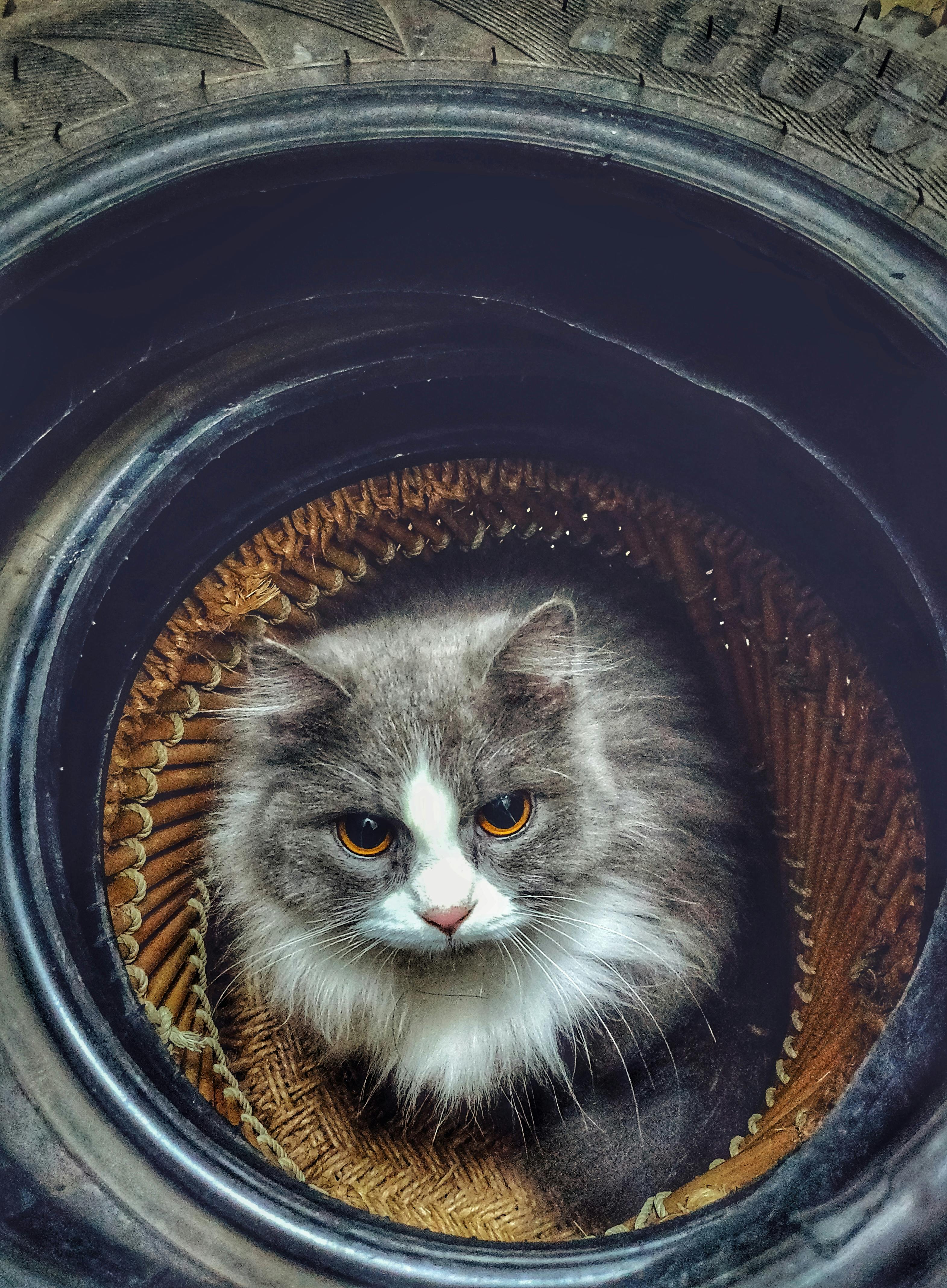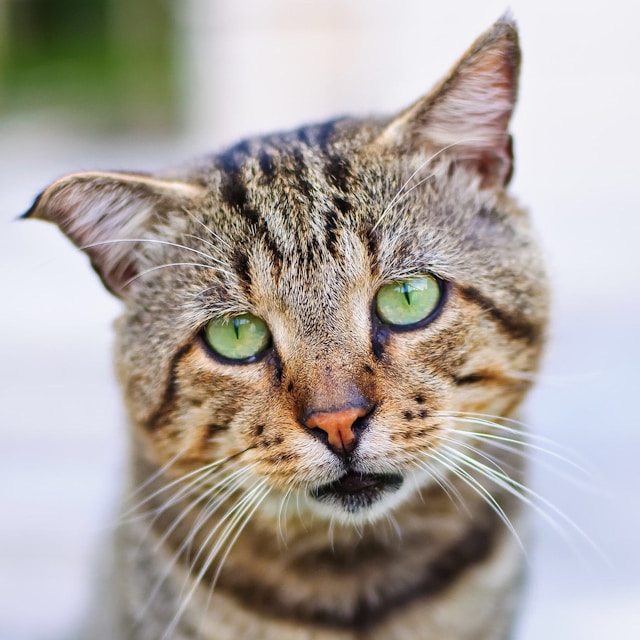Persian Cat

|
OFFICIAL NAME |
Persian |
|
COMMON NAME |
Persian |
|
PET HEIGHT |
10 to 15 inches |
|
PET WEIGHT |
7 to 13 pounds |
|
LIFESPAN |
10 to 15 years |
|
GOOD WITH |
cats, children, dogs, families, seniors |
|
TEMPERAMENT |
affectionate, sociable |
|
INTELLIGENCE |
medium |
|
SHEDDING AMOUNT |
frequent |
|
PLAYFULNESS |
medium |
|
ENERGY LEVEL |
calm |
|
VOCAL LEVEL |
quiet |
|
COAT LENGTH |
long |
|
COLORS |
black/ebony, blue/gray, chocolate/brown/sable, cinnamon, cream/beige/tan, fawn, lavender/silver, lilac, red /orange, white |
|
OTHER TRAITS |
friendly toward humans, friendly toward other pets, friendly toward strangers, good lap cat, low prey drive, requires lots of grooming tolerates being alone, tolerates being picked up |
They get along excellently with all the family members, including other animal pets, provided they are socialized early.
Persian Appearance
These breeds are easy to recognize because of their smooshy and adorable faces. They are famous for their thick fur, big eyes, and heavy bodies. They have various coat colors, such as cream, orange, and gray, while their eyes are blue, hazel, copper, and green. They weigh 7-13 lbs, slightly smaller than other cats.
Persian Personality
As royalty in the world of cats, Persians are lovable and caring and love to play. Often, you will see them having fun with a crumpled piece of paper, or they will delightfully play with their human family if provided a toy to chase.
Meeting new people or being in an environment with plenty of activities might shy them away, but giving them ample time and space will eventually make them comfortable. They are also a typical lap cat who enjoys receiving love from their human family and will not annoy their owners for attention. These breeds are perfect for indoor lifestyle only due to their long coat that needs protection and their gentle characteristics.
Persian Living Needs
Despite their glamorous appearance, caring for a Persian cat doesn't require fancy accommodations. These cats are medium-energy and can be happy in a small apartment or a big house. They might like a cat tree to climb on, but not all are super active, and some prefer to stay low on the ground or the couch. They enjoy lounging in the sun, so having a cozy spot by the window where they can watch birds is a good idea.
Persian cats are adorable, so they make lovely pets for everyone in the family, especially older people and kids. If there's a comfortable lap available, a Persian cat will find it. Generally, they also get along well with dogs and other cats.
Persian Care
Persian cats have thick, layered fur, so brushing them daily is essential. This helps keep their fur and skin healthy, prevents tangles, and reduces the risk of furballs. It would be best to brush them even more often when they shed more during certain times of the year, like the changing seasons. Some people choose to have professionals groom their Persian cats to make this easier.
Persian cats have flat faces, so you must clean their face folds regularly to prevent skin infections and keep them comfortable. These cats are more sensitive to respiratory infections, so if they have a runny nose, it's essential to keep it clear.
Like all cats, Persians also need their nails trimmed and teeth brushed to stay happy and healthy. Introducing your Persian kitten to these routines when they are young is a good idea, ensuring the experience is calm and positive.
Persian Health
Persian cats are generally healthy breeds that can live for 10 to 15 years. However, like other cat breeds, they can face health problems such as genetics, kidney disease, and eye concerns. According to the American Animal Hospital Association, Persian cats, especially those with flatter faces and short jaws, can also have eye and dental problems. So, attention to these areas is essential to keep your cat healthy.
Persian Exercise Requirements
These breeds are prone to being overweight, so they need exercise. Get them active through playing, which they love. They enjoy chasing toys, and you can give them a toy with a string attached or a fishing pole for them to run and jump around.
Persian Training
Persian cats’ intelligence does not follow their curiosity like other breeds of cats. However, they must be provided activities to keep their minds active and sharp. If your Persian loves food, you can offer them simple food puzzles. To prevent them from getting bored, occasionally switching toys will be helpful, or providing them with interactive wand toys with pretend prey will demonstrate their natural hunting instincts.
Persian History
The history of the Persian cats cannot precisely be determined.
But it was in the 1600s that they were taken to Europe from Persia, now called Iran. Early versions of these breeds were shown at the Crystal Palace cat show in Great Britain during the 1800s. Queen Victoria signified her interest and owned several Persian cats during her era. White Heather, one of her Persian cats, stayed in Buckingham Palace even after the Queen died. The Queen's love for these cats made them famous in Britain.
It was in the late 1800s that these breeds arrived in the United States. Persian Cats was the first breed officially recognized by The Cat Fanciers' Association in 1906. During the 1950s, people started breeding Persians with flatter faces and rounder heads.
Because they look so majestic and have been around for a long time, Persian cats have been featured in art, ads, and photos for many years. A famous painting called "My Wife's Lovers" showed Persian and Turkish Angora cats. Today, Persian cats are among the most popular cat breeds in the United States.
Persian Fun Facts
Persian cats have always been admired by people of all ages, including Queen Victoria and Florence Nightingale, an English statistician who owned more than 60 cats in her life, many of whom were Persians.
Celebrities such as Elizabeth Taylor, Martha Stewart, Freddie Mercury, and Giorgio Armani were fans of the Persian cats.
There's even a famous Persian cat in movies named Mr. Tinkles. Sean Hayes provided the voice for this sneaky character in the film 2001 "Cats & Dogs," which had a sequel titled "Cats & Dogs: The Revenge of Kitty Galore" in 2010.
Get insurance plans with wide-ranging coverage options













